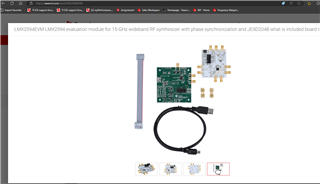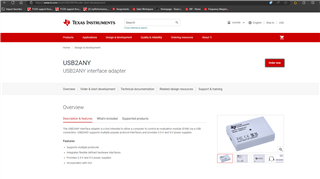Other Parts Discussed in Thread: TRF3765, LMX2594EVM, LMX2594, LMX2592, USB2ANY, LMX2592EVM
Tool/software:
Dear TI,
We have 2 inquiries regarding TI PLLs:
First inquiry
We have acquired a module, the TSW3065EVM, which generates a 3500MHz signal that we need for one of our projects. The good thing about this solution is that it is a module that comes ready to be used, you only need to supply 6V and configure a microswitch so that the internal PLL (TRF3765) can be programmed in the appropriate way to obtain 3500MHz.
The problem we have is that the internal reference used by this module is 10MHz and does not have the precision and stability that we require. For this reason we have made some changes to the module to be able to provide the external 100MHz reference that does give us the necessary precision for the 3500MHz signal.
However, in order to achieve this, we have to reprogram the PLL and then the solution stops being a standalone solution and becomes a solution that requires manual reprogramming of the internal PLL. We have been analyzing the module and we have seen that a CPLD is used that we believe performs the following functions:
- generates the logic for SPI communication with the PLL
- reads the value of the microswitch positions
- accesses an EEPROM memory from which it takes the value that the PLL registers must have to be configured
Therefore, we believe that, either having the source code of the CPLD logic, or having the location and data format of the PLL register data in the EEPROM memory, we can once again convert the TSW3065EVM module solution into standalone with our 100MHz reference signal. Would it be possible to obtain this information?
Second Inquiry
We have also acquired another module, in this case the LMX2594EVM, another PLL but with better noise characteristics than the TSW3065EVM and with which we also generate our 3500MHz signal. The problem with this is that this is an evaluation card and you need another accessory card (i.e. the Reference Pro) to program it .
My question. Is there a standalone card similar to the TSW3065EVM but that comes with the LMX2594 or another PLL with similar phase noise characteristics?
Many thanks for your support
Javier



